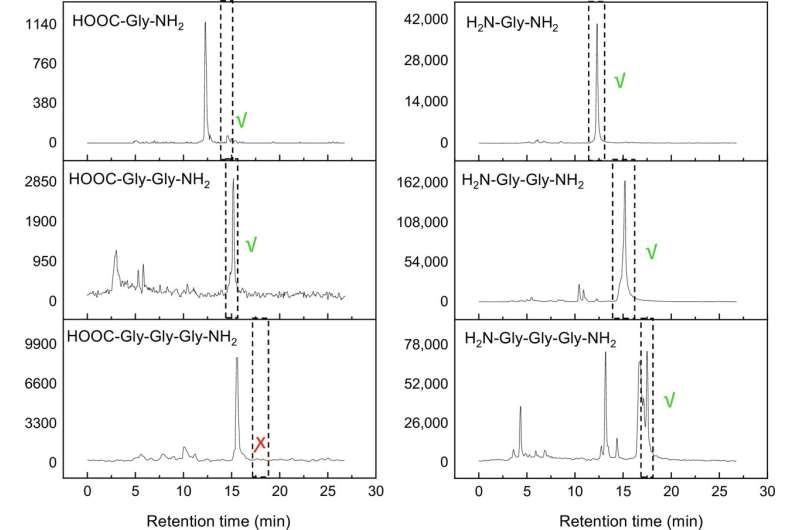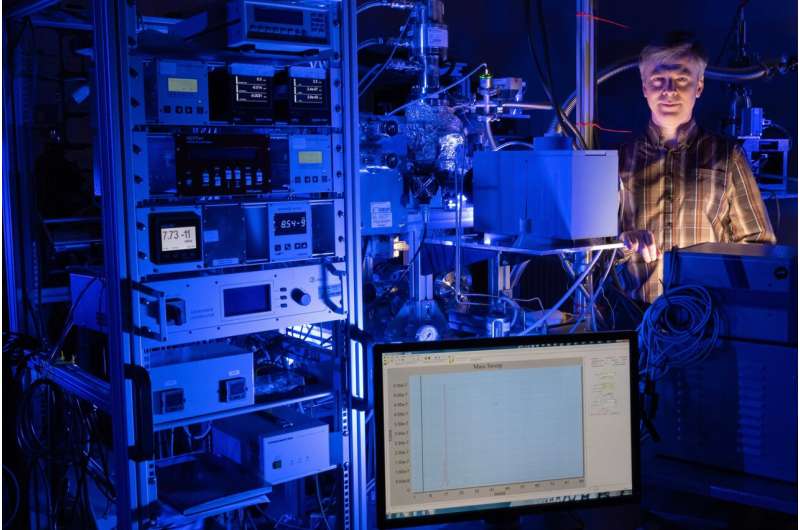Dr. Serge Krasnokutski from the Laboratory Astrophysics and Cluster Physics Group of the Max Planck Institute for Astronomy at the Friedrich Schiller University Jena used vacuum chambers to study the formation of biomolecules under space conditions.Photo credit: Jens Meyer / University of Jena
A research team led by Dr. Serge Krasnokutski from the Laboratory of Astrophysics at the Max Planck Institute for Astronomy at the University of Jena has demonstrated that simple peptides can form on cosmic dust grains. However, it was previously thought that this was not possible if the molecular ice covering the dust grains contained water (which it usually is).
Now, the team, working with the University of Poitiers in France, has discovered that the presence of water molecules is not a major obstacle to the formation of peptides on such dust particles.The researchers report their findings in the journal scientific progress.
Chemistry in the icy vacuum
“We replicated conditions similar to those in outer space in a vacuum chamber and also added substances from so-called molecular clouds,” explains Krasnokutsky. These substances include ammonia, atomic carbon, and carbon monoxide. “Thus, all the chemical elements required for a simple peptide are present,” the physicist added.
Krasnokutsky described that these raw materials initially formed chemical precursors of amino acids called aminoketenes. They then combine to form chains, producing polypeptides. “It was previously suspected that single aminoketenes would combine to form peptides,” the scientists explained
“However, for this step, the absence of water may be crucial, as it may hinder the reaction. At the same time, most interstellar dust grains are covered in water-containing molecular ice,” Krasnokutsky said. Therefore, the hypothesis so far is that if peptides are formed in space, they are formed to a limited extent.

The extracts were analyzed by UPLC. Ion signal at a given molecular mass as a function of retention time from ultra-high performance liquid chromatography analysis of room temperature residue extracts (13C, CO and NH3 Reactant). The occurrence times of ions in chemical standards are shown as dashed lines. Positive identifications of individual molecules are indicated by green check marks, while red crosses represent negative identifications. Credit: scientific progress (2024). DOI: 10.1126/sciadv.adj7179
French precise analysis
“However, high-precision mass spectrometry analysis now available at the University of Poitiers shows that the presence of water in the molecular ice slows down the formation of peptides by fifty percent, but they are still formed,” he explains. “When you consider the timescales on which astronomical processes occur, this slowdown is actually negligible.”
The question of whether our planet’s first biomolecules originated from terrestrial or extraterrestrial sources (or both) is likely to remain open for the foreseeable future. However, as this discovery shows, outer space cannot be ruled out as the source of our life.
More information:
Serge Krasnokutski et al., Formation of Alien Peptides and Their Derivatives, scientific progress (2024). DOI: 10.1126/sciadv.adj7179
Provided by Friedrich Schiller University of Jena
citation: Peptides on interstellar ice: Presence of water molecules not a major barrier to formation, study finds (2024, April 17), Retrieved April 19, 2024, from https://phys.org/news/2024-04 – peptides-interstellar-ice-presence-molecules.html
This document is protected by copyright. No part may be reproduced without written permission except in the interests of fair dealing for private study or research purposes. Content is for reference only.
#Peptides #interstellar #ice #Study #finds #presence #water #molecules #major #obstacle #formation
Image Source : phys.org
